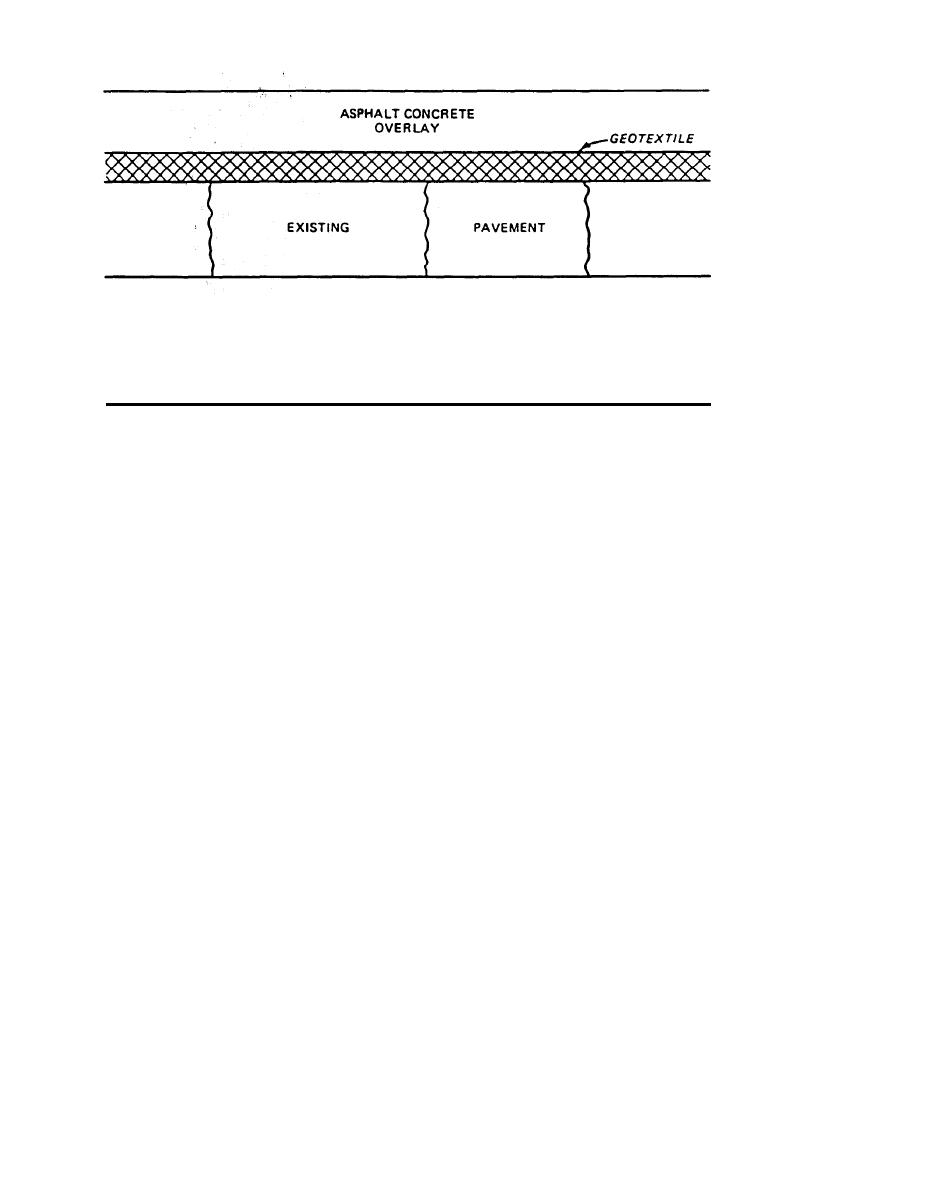
TM 5-818 -8/AFJMAN 32-1030
BASE
COURSE
SUBGRADE
Figure 2-1. Geotextile in AC Overlay.
ever is greater. For AC pavements, Area I shown
(1) Geotextile interlayers are used in two dif-
in figure 2-2 should have a minimum overlay
ferent capacities-the full-width and strip methods.
thickness of 2 inches; whereas, Area II should
The full-width method involves sealing cracks and
have a minimum overlay thickness of 3 inches.
joints and placing a nonwoven material across the
The minimum thickness of an AC overlay for
entire width of the existing pavement. The mate-
geotextile application on PCC pavements is 4
rial should have the properties shown in table 2-1.
inches.
Nonwoven materials provide more flexibility and
f. Spot Repairs. Rehabilitation of localized dis-
are recommended for reflective crack treatment of
tressed areas and utility cuts can be improved
AC pavements.
(2) The strip method is primarily used on PCC
with the application of geotextiles. Isolated dis-
tressed areas that are excessively cracked can be
pavements and involves preparing the existing
repaired with geotextiles prior to an AC overlay.
cracks and joints, and placing a 12 to 24 inch wide
Either a full-width membrane strip application can
geotextile and sufficient asphalt directly on the
be used depending on the size of the distressed
cracks and joints. The required physical properties
are shown in table 2-1, however nonwoven geotex-
area. Localized distressed areas of existing AC
tiles are not normally used in the strip method.
pavement that are caused by base failure should
be repaired prior to any pavement rehabilitation.
Membrane systems have been developed for strip
repairs.
Geotextiles are not capable of bridging structur-
d. Asphalt Sealant. The asphalt sealant is used
ally deficient pavements.
to impregnate and seal the geotextile and bond it
2-4. Separation and Reinforcement
to both the base pavement and overlay. The grade
of asphalt cement specified for hot-mix AC pave-
Soft subgrade materials may mix with the granu-
ments in each geographic location is generally the
lar base or subbase material as a result of loads
most acceptable material. Either anionic or catio-
applied to the base course during construction
nic emulsion can also be used. Cutback asphalts
and/or loads applied to the pavement surface that
and emulsions which contain solvents should not
force the granular material downward into the soft
be used.
subgrade or as a result of water moving upward
e. AC Overlay. The thickness of the AC overlay
into the granular material and carrying the sub-
should be determined from the pavement struc-
grade material with it. A sand blanket or filter
t u r a l requirements outlined in TM 5-822-5/
layer between the soft subgrade and the granular
AFJMAN 32-1018, TM 5-825-2/AFJMAN
material can be used in this situation. Also, the
3 2 - 1 0 1 4 and TM 5-825-3/AFJMAN 32-1014,
subgrade can be stabilized with lime or cement or
Chap. 3 or from minimum requirements, which-
the thickness of granular material can be in-
2-2


 Previous Page
Previous Page
